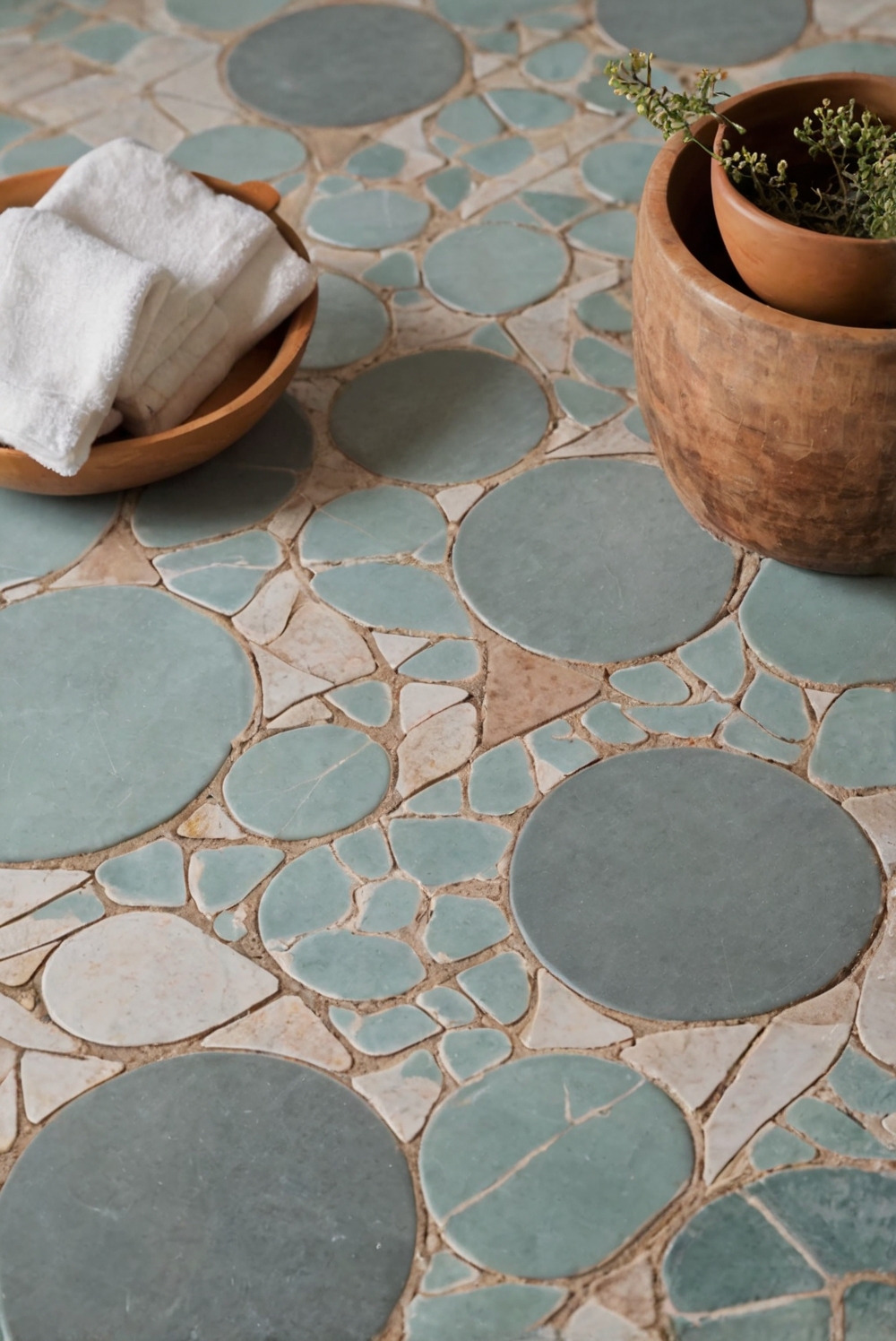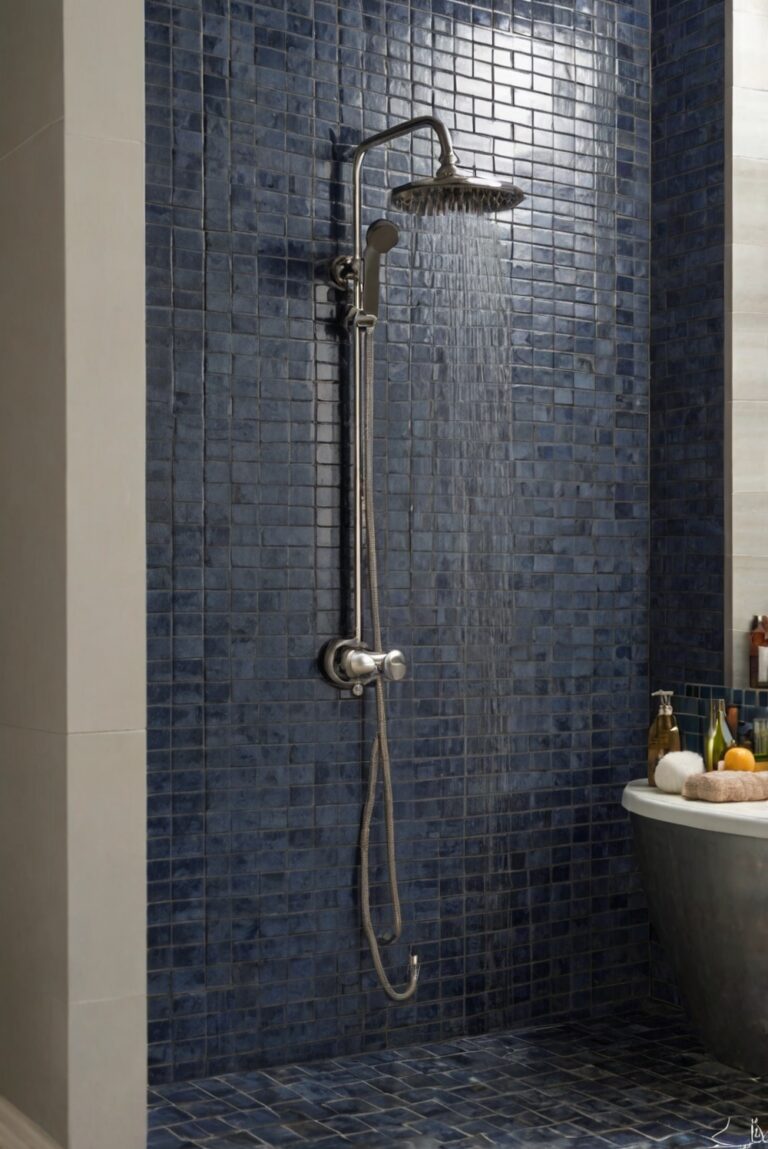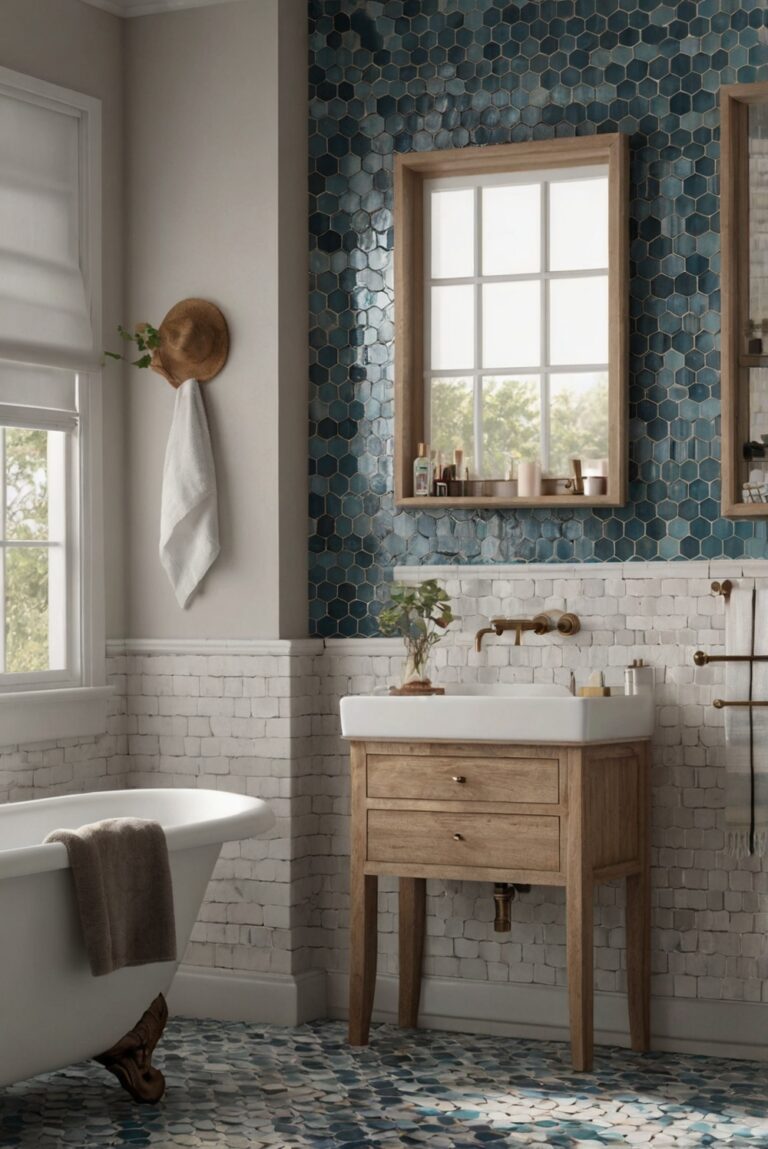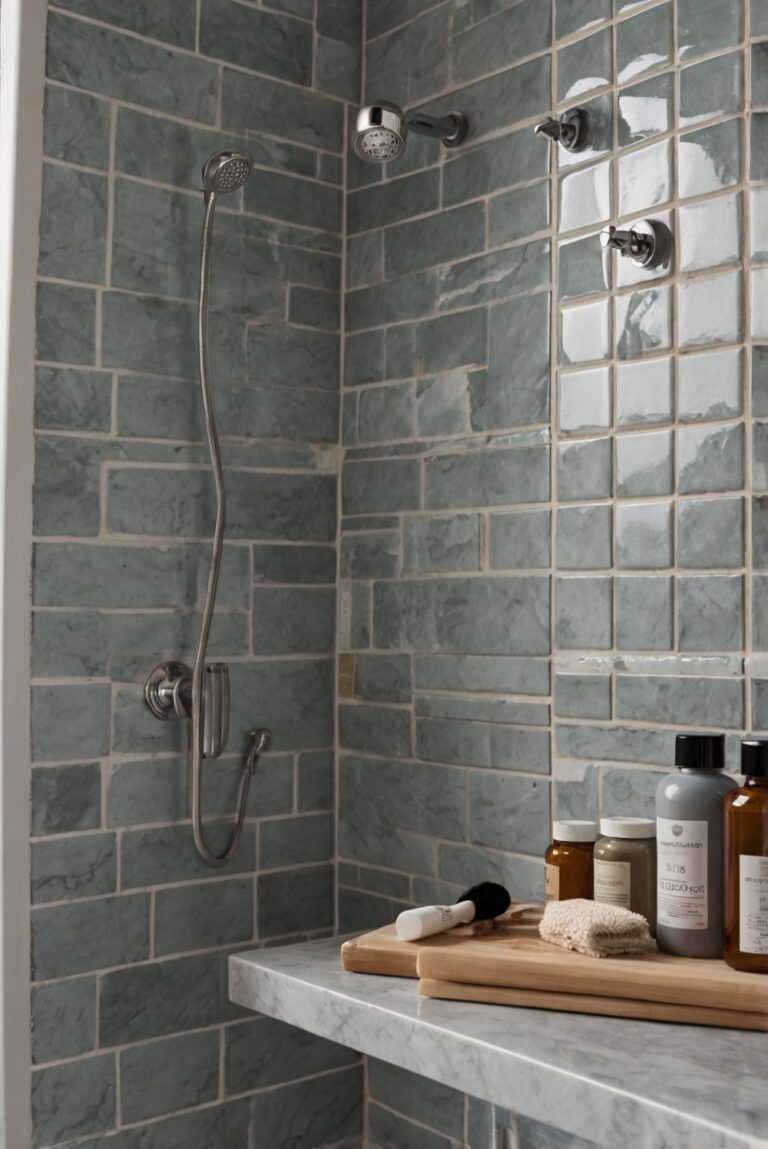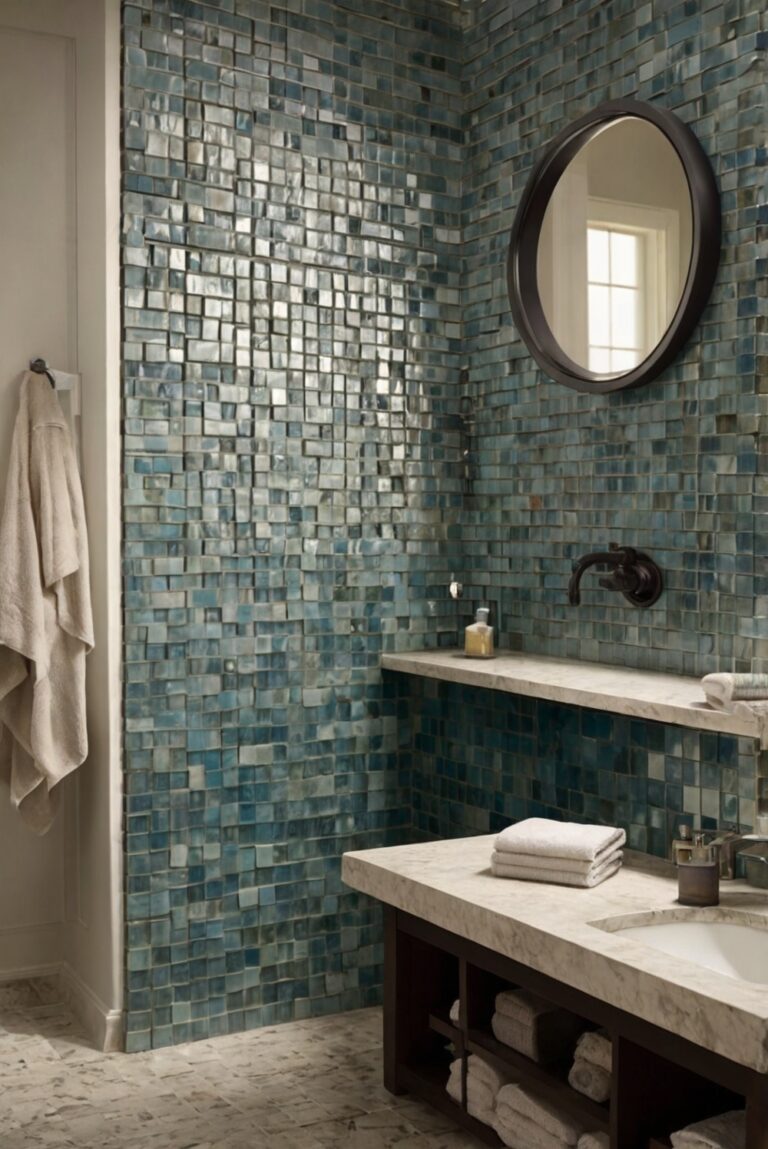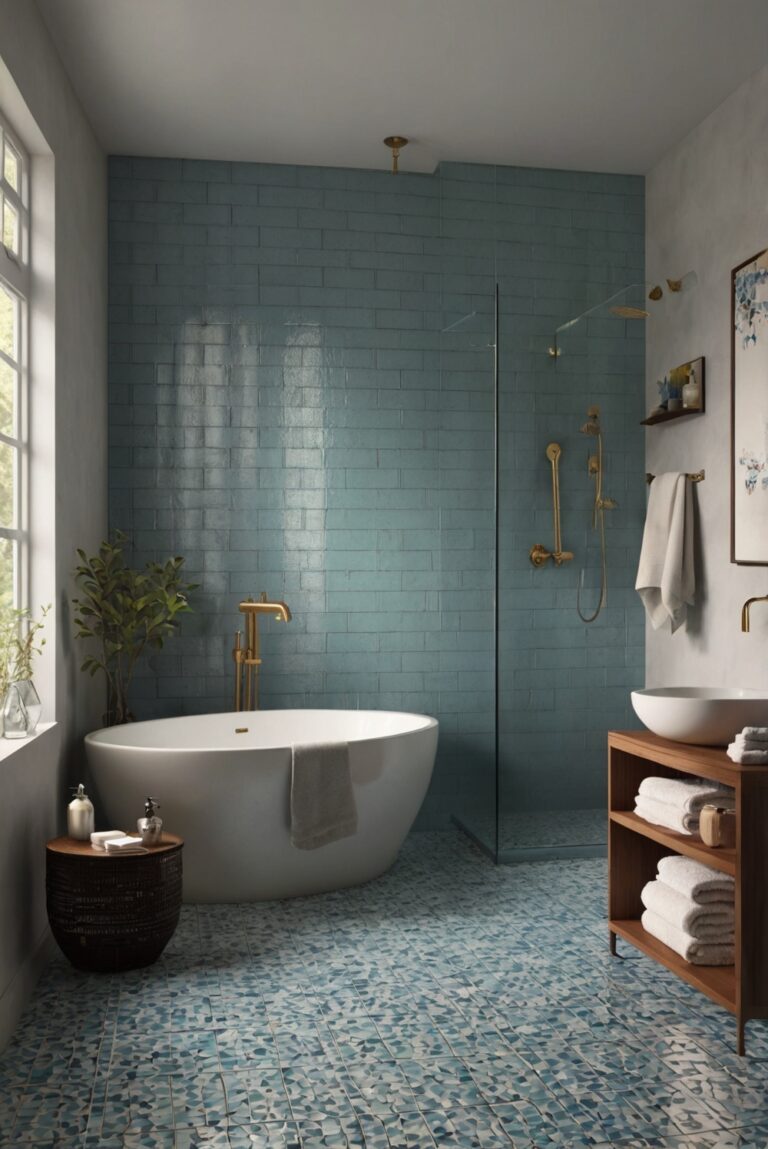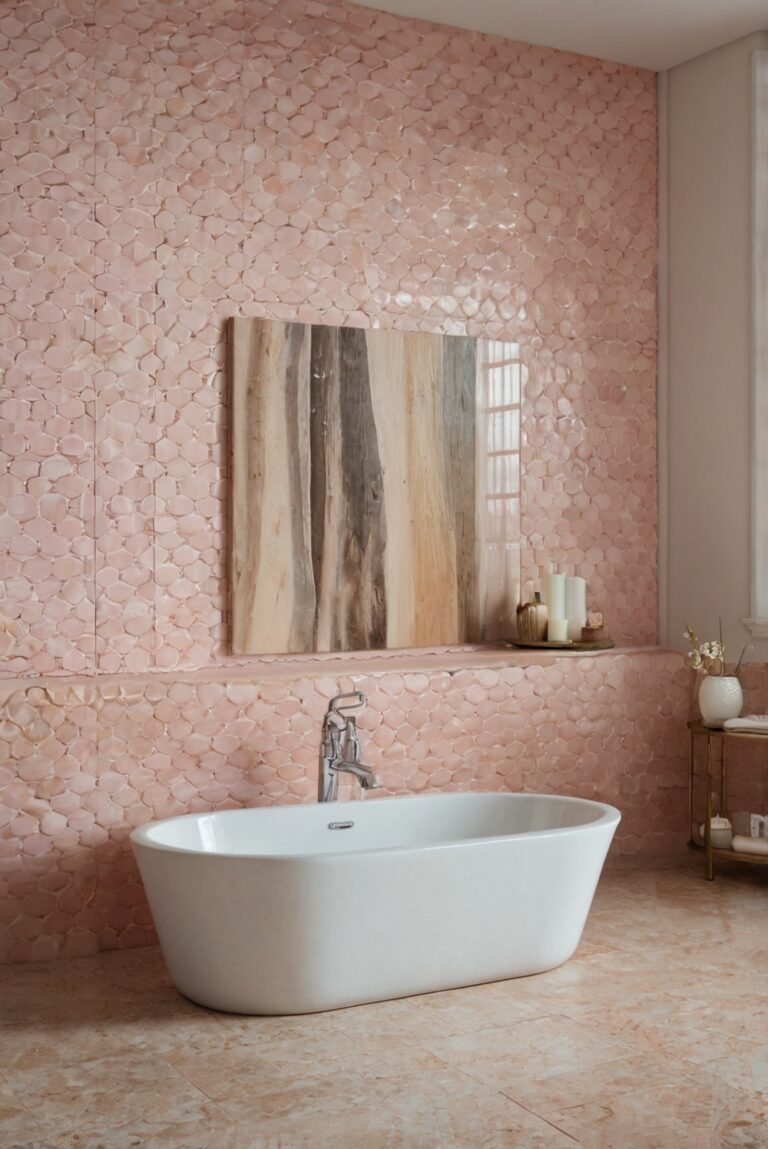Discover the top tile options for your bathroom floor. From elegant marble to durable porcelain, find the perfect choice for your daily interior designer routine.
What are the best tile options for a bathroom floor?
Ceramic and porcelain tiles are ideal choices for bathroom floors due to their durability, water resistance, and ease of maintenance. They come in a variety of colors, styles, and finishes to suit any design aesthetic. Additionally, vinyl tiles and natural stone options like marble or travertine are great alternatives. To ensure a safe and slip-resistant surface, consider textured tiles or those with a matte finish. Proper installation is crucial to prevent water seepage and ensure longevity. Regular cleaning and sealing can enhance the lifespan of bathroom tiles.
What are the best tile options for a bathroom floor?
When choosing tiles for your bathroom floor, it is important to consider durability, water resistance, and aesthetics. Here are some of the best tile options for a bathroom floor:
Ceramic Tiles:
Ceramic tiles are a popular choice for bathroom floors due to their durability and water resistance. They are also easy to clean and come in a wide range of colors and styles. Ceramic tiles are a cost-effective option that can mimic the look of more expensive materials like marble or wood.
Porcelain Tiles:
Porcelain tiles are another excellent choice for bathroom floors. They are highly durable and water-resistant, making them ideal for high-moisture areas like bathrooms. Porcelain tiles come in a variety of finishes, including matte, glossy, and textured, allowing you to achieve the desired look for your bathroom.
Natural Stone Tiles:
For a luxurious and elegant look, natural stone tiles such as marble, granite, or travertine are great options for bathroom floors. While natural stone tiles are more expensive than ceramic or porcelain tiles, they add a timeless beauty to your bathroom. It is important to note that natural stone tiles require more maintenance and sealing to prevent staining and water damage.
Considerations when choosing bathroom floor tiles:
When selecting tiles for your bathroom floor, consider factors such as slip resistance, ease of maintenance, and compatibility with underfloor heating systems. It is also essential to choose tiles that complement the overall design and style of your bathroom.
Conclusion:
Choosing the best tile options for a bathroom floor involves balancing durability, water resistance, aesthetics, and budget. Ceramic, porcelain, and natural stone tiles are all excellent choices for bathroom floors, each offering unique benefits and considerations. By selecting the right tiles for your bathroom floor, you can create a beautiful and functional space that suits your style and needs.
1. What are the best tile options for a bathroom floor?
When choosing tiles for a bathroom floor, it is important to consider factors such as water resistance, durability, and aesthetics. Porcelain and ceramic tiles are popular choices for bathroom floors due to their water resistance and durability. Natural stone tiles like marble and granite can also be used but may require more maintenance. Additionally, luxury vinyl tiles (LVT) are gaining popularity for their water resistance and easy installation. It is essential to choose non-slip tiles to prevent accidents in wet areas. Ultimately, the best tile option for a bathroom floor will depend on your budget, style preferences, and maintenance capabilities.
2. How do I choose the right tile size for a bathroom floor?
When selecting tile size for a bathroom floor, consider the size of the space, the layout of the room, and your personal preferences. Larger tiles, such as 12×24 inches or 24×24 inches, can make a small bathroom appear more spacious, while smaller tiles like mosaic or subway tiles can add visual interest and texture. It is important to balance the size of the tiles with the proportions of the room to create a cohesive look. Additionally, larger tiles require fewer grout lines, making them easier to clean and maintain. Experiment with different tile sizes to find the right balance between aesthetics and functionality for your bathroom floor.
3. Are there any specific tile finishes that are best for bathroom floors?
For bathroom floors, it is recommended to choose tiles with a slip-resistant finish to prevent accidents in wet areas. Matte finishes are popular for bathroom floors as they offer better traction compared to glossy finishes. Textured tiles, such as stone-look or wood-look tiles, can also provide additional grip and reduce the risk of slipping. In addition to safety concerns, consider the maintenance requirements of different tile finishes. Matte finishes tend to show less dirt and water spots compared to glossy finishes, making them easier to clean and maintain in a bathroom setting. Ultimately, the best tile finish for a bathroom floor will depend on your priorities for safety, maintenance, and aesthetics.
4. Can different tile patterns enhance the look of a bathroom floor?
Using different tile patterns can enhance the visual appeal of a bathroom floor and create a unique design statement. Popular tile patterns for bathroom floors include herringbone, basketweave, chevron, and subway patterns. These patterns can add texture, depth, and visual interest to the space. Consider the size of the tiles and the layout of the room when selecting a tile pattern to ensure a harmonious design. Mixing different tile patterns or combining tiles of various shapes and sizes can create a dynamic and visually appealing floor design. Experiment with different patterns to find the one that best complements your bathroom’s style and aesthetics.
5. Are there any cost-effective tile options for a bathroom floor?
When working within a budget, there are several cost-effective tile options for a bathroom floor that offer both quality and style. Ceramic tiles are affordable and come in a wide range of colors, patterns, and finishes. Porcelain tiles are slightly more expensive but offer superior durability and water resistance. Luxury vinyl tiles (LVT) are a budget-friendly alternative that mimics the look of natural materials like wood or stone. These tiles are easy to install and maintain, making them a practical choice for bathrooms. Additionally, mosaic tiles or subway tiles can be used as accents or borders to add visual interest without breaking the bank. Consider mixing high-quality and budget-friendly tiles to create a stylish and cost-effective bathroom floor.

